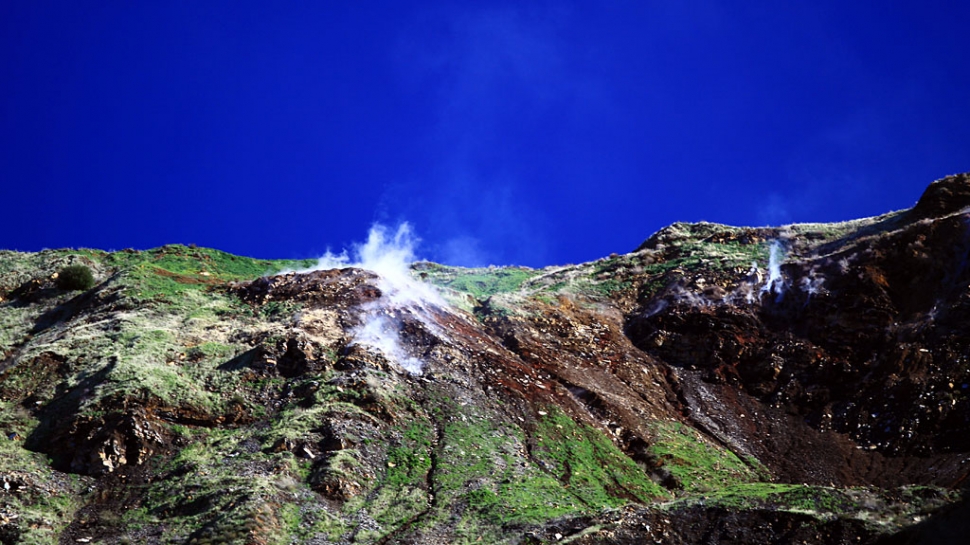|
Fire in the Hills
 By Anonymous — Wednesday, February 17th, 2010
The day after a heavy winter rain, the Sespe Oil field is shown steaming from an underground “hot spot”, a thermal anomaly, according to Ron Oatman, spokesperson for the Ventura County Fire Department. This picture was taken January 23rd by photographer Jeff Muth. Geologists and firefighters have surveyed the area, located in the Sespe Oil field, an active landslide zone with a history of shifting for more than 60 years. Pockets of gas, tar and oil lie several hundred feet below its cracked surface. Cracks along the landslide’s slope allow oxygen to enter the earth, and those natural hydrocarbon materials (gas, tar and oil) to “seep out” of the fine-grain shale. Underground combustion is a possible result, and could be as deep as 100 feet. Since 1987, high heat levels have been recorded in the area as many as five times. “Hot spots” are not uncommon in areas around the world with high concentrations of hydrocarbons. Temperatures have been registered in the low 800’s, about a foot below the surface. Firefighters have cleared brush, and cut a fire line around the area as a precautionary measure. The U.S. Bureau of Land Management owns the acreage (near the Sespe Oil Field), and leases it to Seneca Resources Corp. The rugged, steep terrain is devoid of buildings and equipment, and gated off from public access. The 3,000 acre Sespe Oil Field, producing nearly 50 million barrels of oil since its discovery in 1887, contains more than 300 oil wells, of which 210 are active. |
